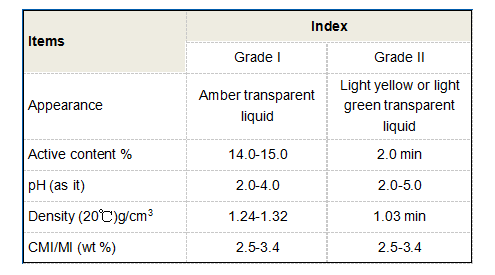What is Poly Aluminum Chloride? | Properties, Uses, and Applications
Understanding Poly Aluminum Chloride Composition, Properties, and Applications
Poly Aluminum Chloride (PAC) is a versatile chemical compound that plays a significant role in various industrial and municipal applications. It is primarily used as a coagulant in water treatment processes, helping to purify water by removing suspended particles and impurities. Understanding its composition, properties, and applications can shed light on its importance in environmental management and industrial processes.
Composition and Structure
Poly Aluminum Chloride is an inorganic polymer composed of aluminum, chlorine, and hydroxyl groups. It is usually formulated in liquid form or as a solid granule, depending on the application. The chemical structure can vary significantly, leading to different grades of PAC, such as basic, medium-basic, and high-basic types. The basicity of PAC is defined as the ratio of aluminum ions to chloride ions in the compound, which influences its reactivity and efficiency as a coagulant.
Properties of PAC
One of the most noteworthy properties of Poly Aluminum Chloride is its effectiveness in coagulation and flocculation processes. It possesses a high charge density, which allows it to neutralize the charges of suspended particles in water. This results in the agglomeration of smaller particles into larger flocs, making it easier to remove them from the water. PAC is also favored for its rapid dissolution and efficiency across a broad pH range, enhancing its usability in different water qualities.
In addition to its coagulating properties, PAC is known for producing less sludge compared to other coagulants like aluminum sulfate. This characteristic is particularly advantageous in wastewater treatment, as it reduces the volume of post-treatment waste that needs to be managed.
what is poly aluminum chloride

Applications in Various Industries
Poly Aluminum Chloride has a wide array of applications across different sectors. Its primary use is in water and wastewater treatment facilities, where it helps ensure that drinking water meets safety standards by effectively removing organic matter, sediments, and pathogens.
Beyond water treatment, PAC is also employed in the paper-making industry. It acts as a retention aid, improving the efficiency of fiber retention and enhancing the quality of the final paper product. Furthermore, PAC finds applications in the food industry, particularly in the production of edible oils where it aids in the clarification process.
Moreover, PAC is used in the cosmetic and pharmaceutical industries as an ingredient in various formulations. Its antiperspirant properties make it a common component in personal care products. In the pharmaceutical field, it serves as a stabilizer and thickening agent in various medications.
Conclusion
Poly Aluminum Chloride is an essential chemical compound with diverse applications in water treatment, paper production, food processing, and more. Its ability to efficiently coagulate and flocculate makes it a valuable asset in maintaining clean water and improving industrial processes. As environmental regulations become more stringent and the need for sustainable practices grows, the relevance of PAC in various industries is likely to continue expanding, highlighting its significance in modern applications.
-
Water Treatment with Flocculant Water TreatmentNewsJun.12,2025
-
Polymaleic AnhydrideNewsJun.12,2025
-
Polyaspartic AcidNewsJun.12,2025
-
Enhance Industrial Processes with IsothiazolinonesNewsJun.12,2025
-
Enhance Industrial Processes with PBTCA SolutionsNewsJun.12,2025
-
Dodecyldimethylbenzylammonium Chloride SolutionsNewsJun.12,2025





